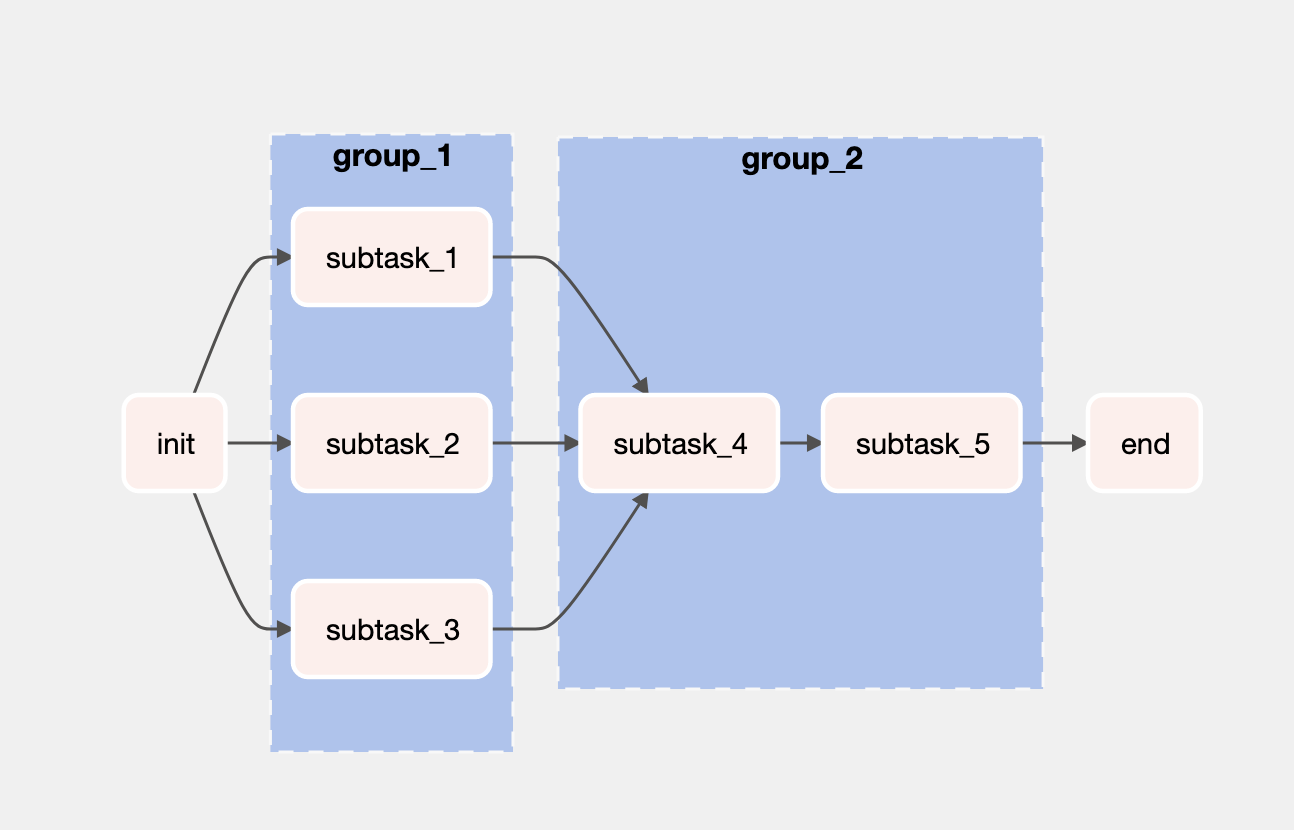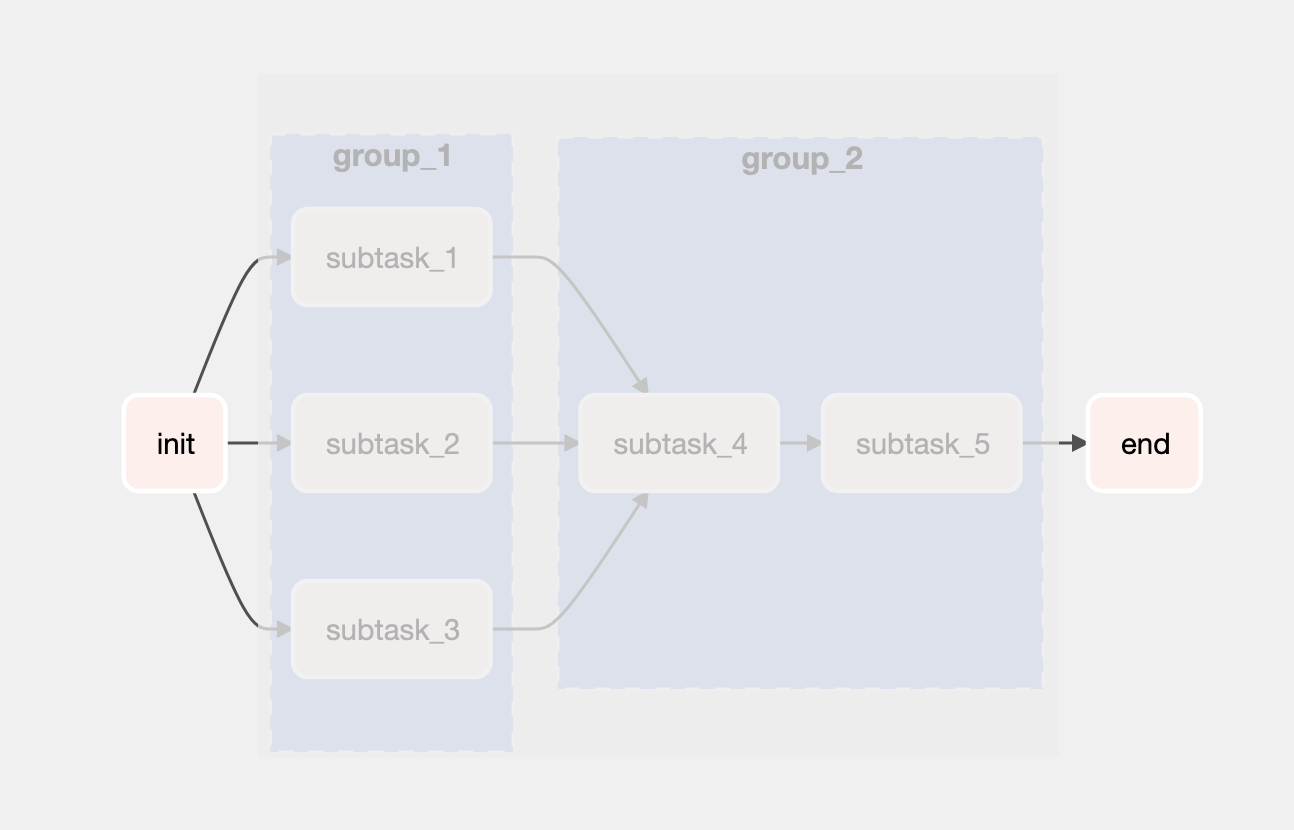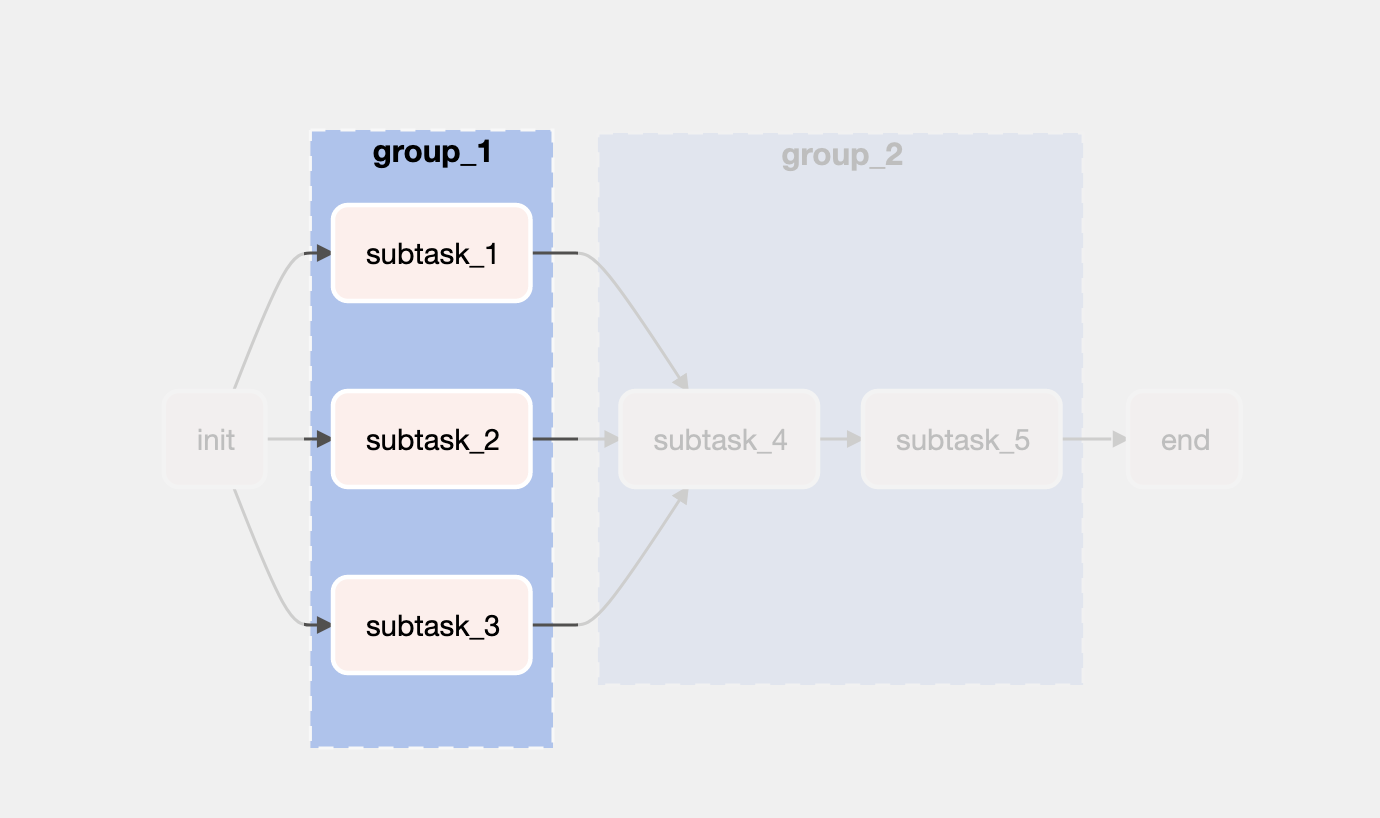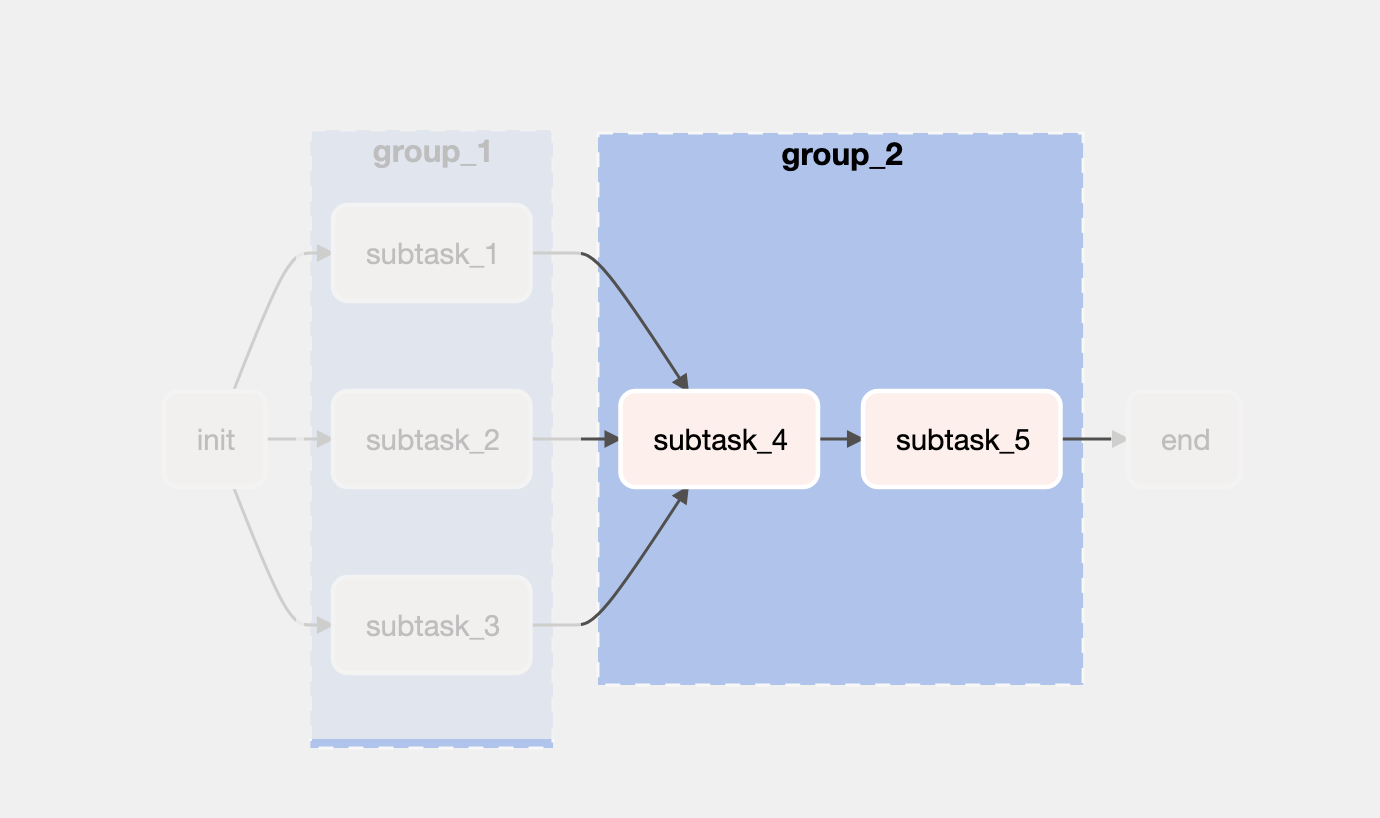Source code
The complete code is available here.
Intro
Before Task Groups in Airflow 2.0, Subdags were the go-to API to group tasks. With Airflow 2.0, SubDags are being relegated and now replaced with the Task Group feature. The TaskFlow API is simple and allows for a proper code structure, favoring a clear separation of concerns.
What we’re building today is a simple DAG with two groups of tasks, using the @taskgroup decorator from the TaskFlow API from Airflow 2. The graph view is:

What this pipeline does is different manipulations to a given initial value. The init() task instantiates a variable with the value 0. It then passes to a group of subtasks (group_1) that manipulate that initial value. group_2 will aggregate all the values into one. Finally, the end() subtask will print out the final result.
Let’s get started by breaking the pipeline down into parts.
Grouping tasks - breakdown
As you can see in the image above, there’s an init() and end() task. In between, there are two groups of tasks, but let’s start with the first and last task of the pipeline.
init() task and end() task

The init() task is the starting point for this pipeline - it returns the initial value that will be manipulated throughout the pipeline: 0. The end() task will print out all the manipulations in the pipeline, to the console.
Let’s look at the code for the init() task:
@task
def init():
return 0
That’s it. Now the code for the end() task:
@task
def end(value):
print(f'this is the end: {value}')
It’s also quite simple to define the flow of the whole pipeline, returned by the function that wraps everything:
return end(group_2(group_1(init())))
Looking at the code above it’s possible to see that:
- The
init()function “feeds”group_1; - The result of
group_1is “sent” togroup_2; end()receives the outcome ofgroup_2.
Task Group #1 (group_1)

group_1 has a set of three tasks that manipulate the original number:
# This task group has three subtasks:
# each subtask will perform an operation on the initial value
# this group will return a list with all the values of the subtasks
@task_group(group_id='group_1')
def group_1(value):
# The @tasks below can be defined outside function `group_1`
# What matters is where they are referenced
@task(task_id='subtask_1')
def task_1(value):
task_1_result = value + 1
return task_1_result
@task(task_id='subtask_2')
def task_2(value):
task_2_result = value + 2
return task_2_result
@task(task_id='subtask_3')
def task_3(value):
task_3_result = value + 3
return task_3_result
# tasks are referenced here
task_1_result = task_1(value)
task_2_result = task_2(value)
task_3_result = task_3(value)
# sending this list to `group_2`
return [task_1_result, task_2_result, task_3_result]
The group_1 function receives the result from the init() task.
And notice what’s being returned here: a list of the three values. Each of the value stems from subtask_1, subtask_2 and subtask_3. This list of values is what’s going to be sent to group_2.
Task Group #2 (group_2)

group_2 is rather simple. It receives the list sent from group_1 and sums all values (subtask_4 does it) and then subtask_5 just multiplies by two the result from task_4:
@task_group(group_id='group_2')
def group_2(list):
@task(task_id='subtask_4')
def task_4(values):
return sum(values)
@task(task_id='subtask_5')
def task_5(value):
return value*2
# task_4 will sum the values of the list sent by group_1
# task_5 will multiply it by two.
task_5_result = task_5(task_4(list))
return task_5_result
That’s it - the next task is the end(), and it has been handled before in this post. Again, it’s possible to see the full code here.
If you check the log of the end() task (see my previous post to know how to check for task logs), you’ll see the result printed. The final result should be 12.
Success! 🎉
Conclusion
Creating task groups in Airflow 2 is easy - it removes complexity that existed before and allows creating pipelines with clean code.